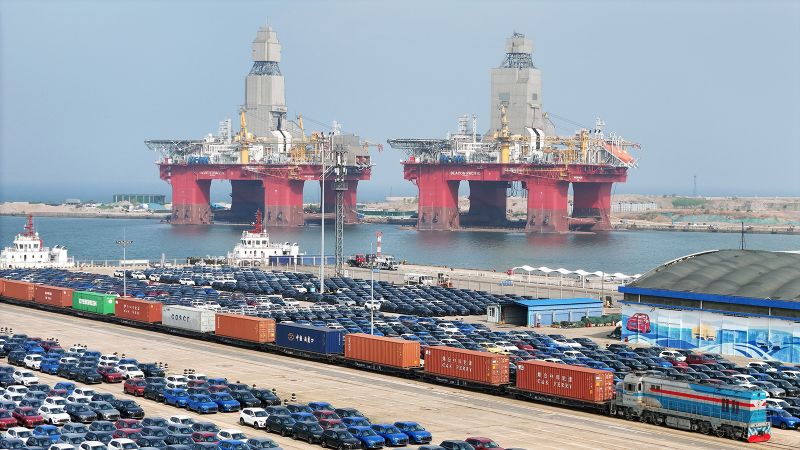In April, China’s export growth experienced a notable decline as the repercussions of Donald Trump’s extensive tariffs began to take hold. This situation underscores the damaging effects of the trade war between the United States and China, two of the world’s largest economies, as they both gear up for discussions aimed at de-escalating the conflict. This period is marked by growing concerns regarding the economic ramifications on both sides, and it appears that each country is feeling the pressure to resolve their differences to stabilize trade.
According to customs data reported on Friday, outbound shipments from China increased by 8.1% in US dollar terms for that month. This figure reflects a downturn from the 12.4% growth seen in March, prompting speculation that businesses engaged in a last-minute rush to fulfill orders before the imposition of high tariffs. The ramifications are evident as Chinese exports to the United States dipped by 2.5% in April, and imports from the US experienced a decline of 4.7%. These figures, while not entirely shocking, highlight a continuing trend of economic strain attributed to the ongoing trade war.
Economists had anticipated a possibly worse outcome, yet these trade figures add to a growing body of economic data pointing towards a significant toll inflicted by the trade conflict on both the Chinese and American economies. Recent reports indicate that China’s manufacturing sector experienced a contraction at its most accelerated rate in 16 months in April. This downturn has prompted the Chinese government to prioritize the introduction of fresh economic stimulus measures aimed at combating the negative effects.
Simultaneously, the US economy encountered a setback, marked by a contraction in the first quarter – the first decrease observed in three years. Businesses began stockpiling goods in anticipation of Trump’s “Liberation Day” tariffs, which were implemented in April, further illustrating the urgency of the situation. The statistics being released clearly define how both nations find themselves in a precarious economic landscape due to their mutual trade disputes.
As the situation escalates, the significance of upcoming talks weighs heavily on both nations. This weekend, officials from the Trump administration are set to meet with their Chinese counterparts in Geneva, Switzerland, to explore potential pathways for de-escalating the tariffs. Current tariffs imposed by the US stand at a staggering 145% on a multitude of Chinese imports, while China retaliated with a 125% tariff on US imports. Consequently, this tit-for-tat trade battle has caused a stark decline in commerce between the two countries, sparking further concerns among logistics experts regarding the future of trade relations.
The direct implications of these tariffs are becoming increasingly evident. Ships arriving at US ports from China are now subject to these tariffs, signaling that consumers can soon expect higher prices and possible shortages of certain goods. The ripple effects of these tariffs are pervasive, affecting not only trade figures but also consumer experiences and market stability.
In Geneva, US Treasury Secretary Scott Bessent and Trade Representative Jamieson Greer will engage in discussions regarding the possibility of a trade deal, although Bessent has expressed skepticism regarding the prospects for a resolution. President Trump has made it clear that he is unwilling to lower the existing tariffs prior to negotiations, a stance that China considers a pre-condition for any meaningful talks to commence.
In his statements, Trump indicated he would raise the case of Jimmy Lai, a prominent Hong Kong media tycoon currently facing a national security trial, within the context of negotiations. Lai, known for his outspoken critique of Beijing through his publisher, Apple Daily, is emblematic of the tensions in Hong Kong and underscores the broader implications of the trade negotiations beyond economic considerations.
As the situation unfolds, it remains a developing story with financial and geopolitical ramifications that will likely impact both economies for the foreseeable future. Further updates are anticipated as the discussions in Geneva progress, with many eyes watching closely to see how these critical talks will shape the trajectory of US-China relations and global trade patterns.



